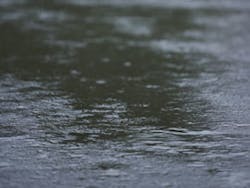Guest Editorial- Characterizing Stormwater Quality: A Fool’s Errand?
With the passage of time, the stormwater profession has become increasingly aware of the complexities of characterizing stormwater. We most commonly hear of the shortcomings of automatic samplers, bias of sample splitting, deficiencies of certain analytical procedures, uncertainty of flow measurements, and problematic belief in concentration values near their detection limits. Less heard is something oceanographers discovered more than 10 years ago: that the observed concentrations of dissolved metals differ with filter manufacturer and the length of filter time. We then add issues related to storm selection: Do the storms selected properly represent reality? Given all of these complications, what confidence can we place in our attempts, however heroic, to characterize stormwater? What confidence can we place in the numbers?
Going further, let’s assume we have a sampling and analytical protocol in which we can place complete confidence. The cost per station is substantial. The response, given limited budgets, is to establish few stations. Will sampling only one outfall per 100, for example, properly characterize the community? We compensate for this limitation through the use of community-wide models. But how accurate can these models be when we tend to use the same runoff concentrations for each type of land use, despite the awareness that concentrations appear to differ within the apparently same land use type? After spending so much money, the suspicion is that we are only going to know the obvious: that stormwater is indeed polluted.
Some say that we need to define a current condition so that we can ascertain whether our best management practices (BMPs) are having an effect. Let’s assume our efforts at a particular location result in excellent characterization and that we repeat the exercise five years hence. First, it is quite likely that the protocol has changed, given the evolution of our awareness of the best way to do monitoring. But let’s assume that is not the case and that we can make the comparison of two data points collected at the same location separated by five years. What can we conclude about our BMP program? Nothing, except in the case of a total ban on something like a particular pesticide or fertilizer with phosphorus. But these BMPs are rare. For all others, nothing can be said. If the observed concentrations have decreased, we don’t really know the quantitative effect of particular BMPs because we are likely to have more than one BMP affecting various contaminants. We are unable to use this information to ascertain the cost effectiveness of particular BMPs. Lacking such information, how can we determine maximum extent practicable (MEP)?
Is there a solution? I offer an alternative: characterize the watershed rather than characterize the stormwater. Let’s consider our obligations under NPDES permits and some of the BMPs we are implementing.
The obligation under our NPDES permits is to reduce nonpoint-source pollutant loading and to do so to the maximum extent practical. It is not to improve water quality per se, although that is the ultimate objective. We should note that even with the full achievement of MEP, which is many years, if not decades, in the future, stormwater will remain significantly polluted. Let’s collect data that are more directly associated with each of our BMPs.
What is offered here is not complete, but rather some suggestions that provide a sense of what is being proposed. Street sweeping and cleaning of drain inlet sumps, if you have them, are two common BMPs. Upgrading from brush to vacuum sweeping and increasing sweeping frequency are being much discussed; the same with parking lots. A BMP could be the requirement that certain types of parking lots, such as retail commercial, be swept at a prescribed level. We can evaluate the effectiveness of such programs by characterizing dirt accumulation and by what is removed in the sumps.
The dirt’s particle size distribution and chemistry can be characterized. An advantage is that we need not worry about detection limits. Such measures are relatively inexpensive to perform, allowing extensive sampling throughout a watershed. Over time, we will be able to better understand the factors that cause accumulation rates and chemistry. But there is more than that; consider pesticides. We know that pesticides drift from the point of application into nearby streets. A decrease in the pesticide content of street dirt over time gives an indication of the success of an educational program. The same can be said of nutrients.
Other types of monitoring to characterize the watershed and allow the evaluation of the effectiveness of BMPs are citizen surveys and sales of pesticides and fertilizers. Let’s spend some dollars to characterize specific sources of pollutants, such as telephone poles (pentachlorophenol), road barriers (zinc), roof types (metals, pesticides, nutrients), and old caulking (PCBs). Surveys can be done in the watershed to determine the quantities of each of these–that is, the number of telephone poles, the length of galvanized road barriers, and so on.
Our community wash-off models have for 40 years been structured based on land use: residential, commercial, and industrial. The deep weakness of such models is that the structure is not directly related to the BMP programs. Let’s consider structuring our models based on scape: roadscape, parkingscape, roofscape, and landscape. This dissection more directly relates to our BMPs.
Does the above approach carry uncertainty? Certainly. But let’s beware of the illusion of certainty. There is always the tendency to believe that current practice has a certainty substantially greater than reality, complemented by the tendency to believe that the uncertainty of a new proposed practice is greater. This is simply not the case. A comparison of various reports and articles that characterize stormwater shows wide range in loadings. Tables that present “high, low, median” loadings differ by a factor of five between the high and the low for the same land use.


